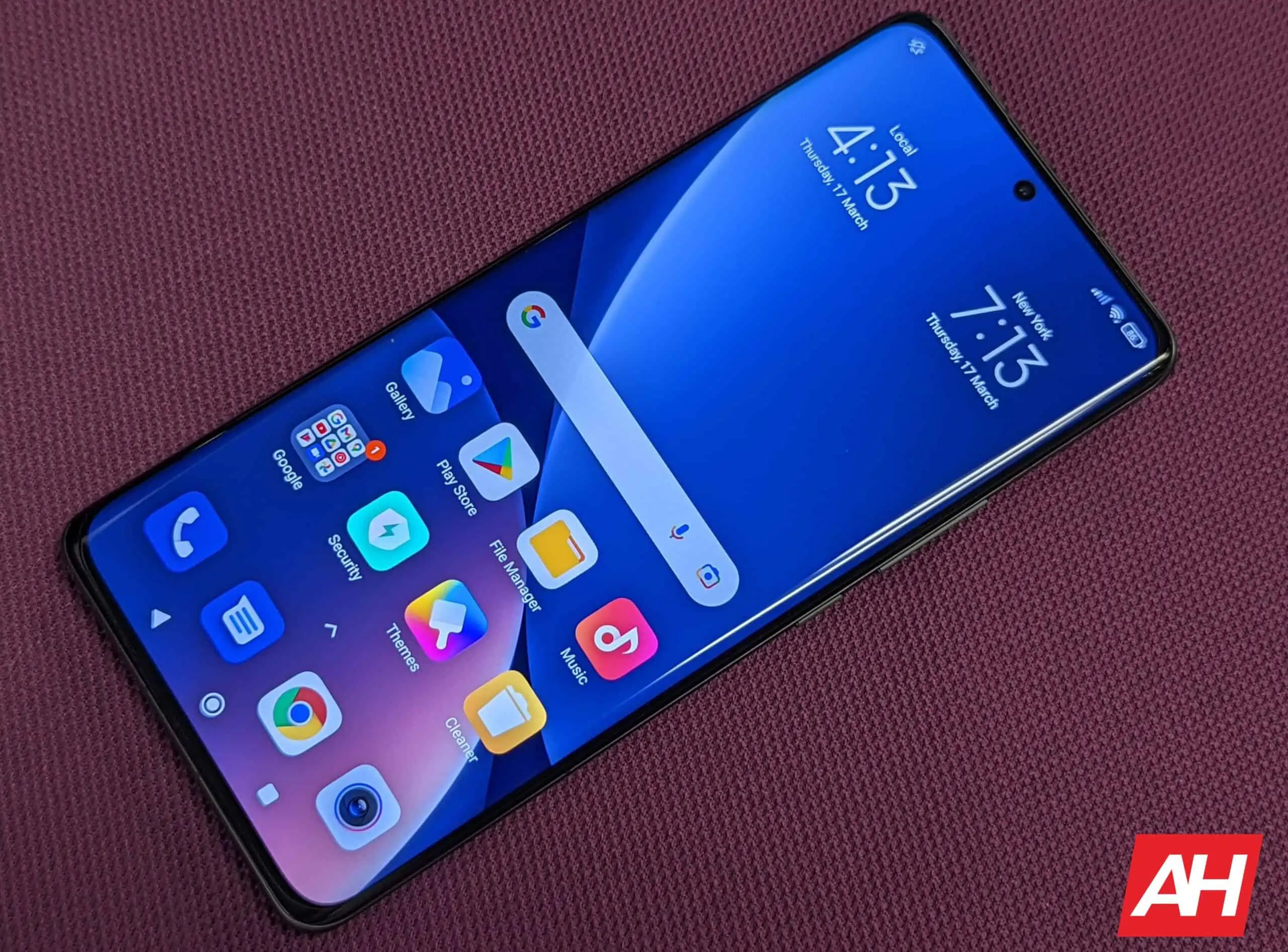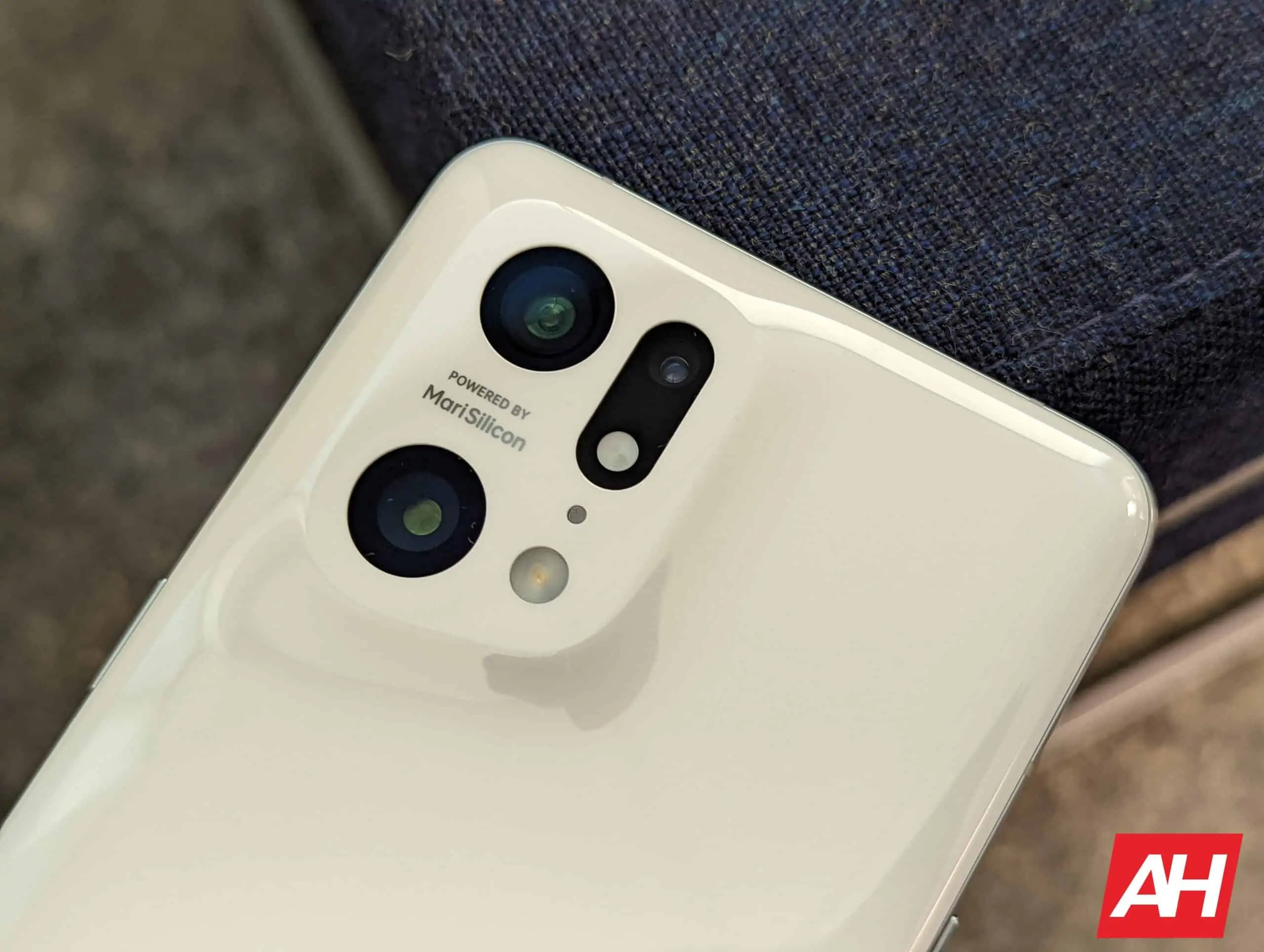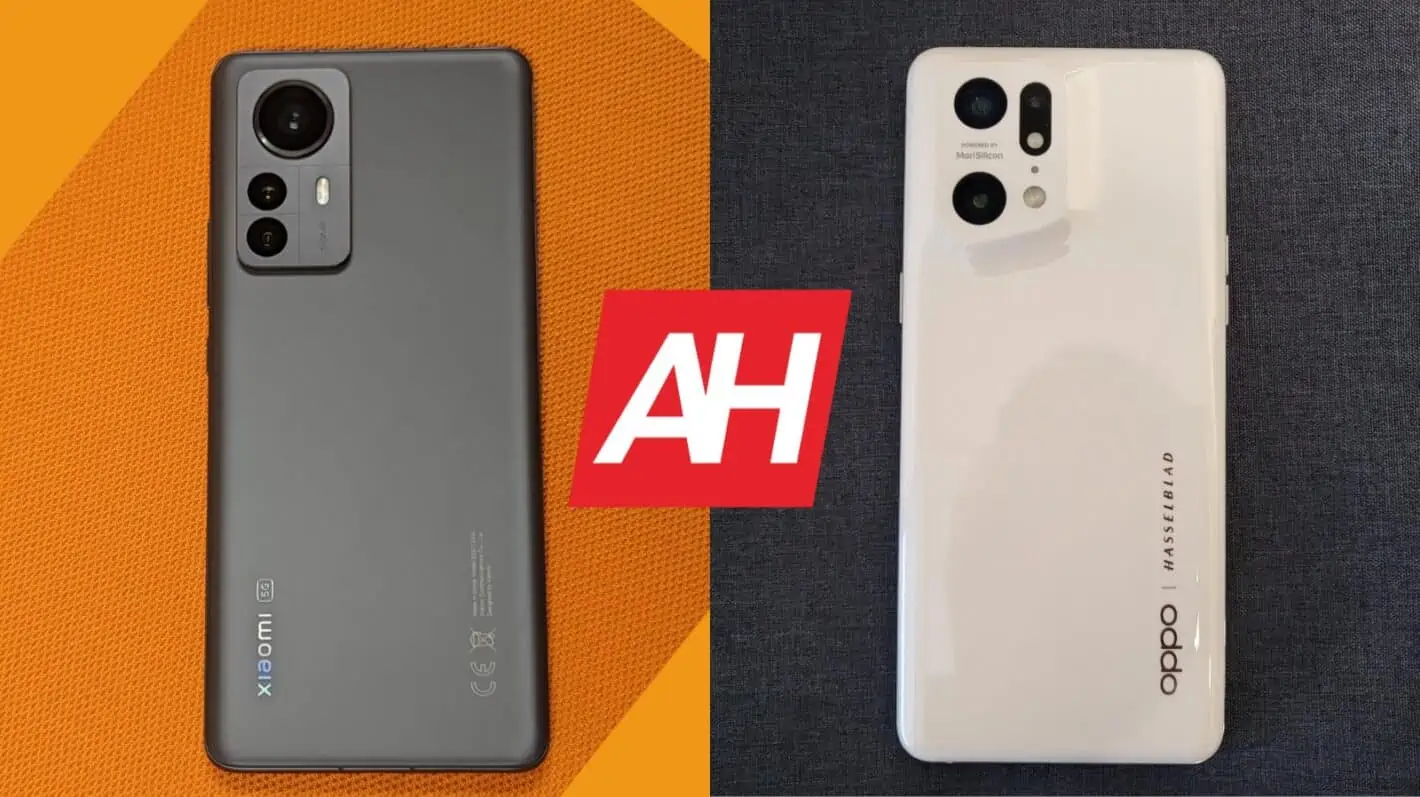It’s time to compare the Xiaomi 12 Pro vs OPPO Find X5 Pro, the two heavyweight Chinese flagships. These are the most powerful smartphones Xiaomi and OPPO have to offer at the moment. They’re considered to be amongst the most powerful smartphones in the market. Both devices launched globally quite recently, and both have eye-watering specifications. We’ve also reviewed both not long ago.
That being said, these two phones are not exactly as similar as you may think. The two companies did take somewhat different approaches here, even though there are similarities between them. We’ll first list their specifications, and will then proceed to compare the two phones across a number of categories. That being said, let’s kick off the Xiaomi 12 Pro vs OPPO Find X5 Pro comparison, shall we?
Specs
| Xiaomi 12 Pro | OPPO Find X5 Pro | |
| Screen size | 6.73-inch QHD+ curved AMOLED display (120Hz adaptive refresh rate LTPO, down to 1Hz) | 6.7-inch QHD+ curved AMOLED display (120Hz adaptive refresh rate, LTPO2, down to 1Hz) |
| Screen resolution | 3200 x 1440 | 3216 x 1440 |
| SoC | Qualcomm Snapdragon 8 Gen 1 | Qualcomm Snapdragon 8 Gen 1 |
| RAM | 8GB/12GB (LPDDR5) | 8GB/12GB (LPDDR5) |
| Storage | 128GB/256GB, non-expandable | 256GB/512GB, non-expandable |
| Rear cameras | 50MP (f/1.9 aperture, wide-angle, 24mm lens, OIS, Dual Pixel PDAF, 1.22um pixel size) 50MP (telephoto, f/1.9 aperture, 48mm lens, PDAF, 2x optical zoom) 50MP (ultrawide, f/2.2 aperture, 115-degree FoV) |
50MP (f/1.7 aperture, 25mm lens, 1.0um pixel size, multi-directional PDAF, OIS) 13MP (telephoto, f/2.4 aperture, 52mm lens, 2x optical zoom, PDAF) 50MP (ultrawide, f/2.2 aperture, 15mm lens, 110-degree FoV, 1.0um pixel size, multi-directional PDAF) |
| Front cameras | 32MP (f/2.5 aperture, 26mm wide angle, 0.7um pixel size) | 32MP (f/2.4 aperture, 21mm lens, 0.8um pixel size) |
| Battery | 4,600mAh, non-removable, 120W wired charging, 50W wireless charging, 10W reverse wireless charging | 5,000mAh, non-removable, 80W wired charging, 50W wireless charging, 10W reverse wireless charging |
| Dimensions | 163.6 x 74.6 x 8.2mm | 163.7 x 73.9 x 8.5/8.8mm |
| Weight | 204/205 grams | 195/218 grams |
| Connectivity | 5G, LTE, NFC, Bluetooth 5.2, Wi-Fi, USB Type-C | 5G, LTE, NFC, Bluetooth 5.2, Wi-Fi, USB Type-C |
| Security | In-display fingerprint scanner (optical) | In-display fingerprint scanner (optical) |
| OS | Android 12 MIUI 13 |
Android 12 ColorOS 12.1 |
| Price | $999 | €1,299 |
| Buy | Xiaomi | OPPO |
Xiaomi 12 Pro vs OPPO Find X5 Pro: Design
Both the Xiaomi 12 Pro and OPPO Find X5 Pro feature a frame made out of metal, aluminum, to be more accurate. The Xiaomi 12 Pro includes a glass back, while you’ll find ceramic on the OPPO Find X5 Pro. Both devices also come in vegan leather variants, but only in China, at least for now. They have similar shapes, and they’re both quite slippery. Ceramic is supposed to be more durable, and it also battles fingerprints a bit more successfully than glass.
The two devices also have similar dimensions. They’re almost equally tall, while the OPPO Find X5 Pro is narrower, and slightly thicker. The Xiaomi 12 Pro weighs 204/205 grams, while the OPPO Find X5 Pro weighs 218 grams (ceramic model) / 195 grams (Vegan Leather model). Only the Find X5 Pro has an official water and dust resistance rating (IP68). It’s quite odd the Xiaomi 12 Pro does not.
Both of them include display camera holes, though in different places, while their rear camera modules are in the same place, in the top-left corner. Do note that those camera islands do look different, though. Both phones feel extremely premium in the hand, needless to say. They are not small by any means, and are quite comfortable to use. You’ll likely want to get a case for both phones, though, as they both are quite slippery.
Xiaomi 12 Pro vs OPPO Find X5 Pro: Display
The Xiaomi 12 Pro features a 6.73-inch QHD+ (3200 x 1440) LTPO AMOLED display. This panel is curved, and it offers a 120Hz refresh rate (adaptive). Dolby Vision is supported, and the panel can also project HDR10+ content. It also gets quite bright at 1,500 nits of peak brightness. We’re looking at a 20:9 display aspect ratio here, and a screen-to-body ratio of 89.6% (approximately). The display is protected by the Gorilla Glass Victus.

The OPPO Find X5 Pro includes a 6.7-inch QHD+ (3216 x 1440) LTPO2 AMOLED display. This panel is also curved, and it also has a refresh rate of 120Hz (adaptive). It can project HDR10+ content, and its peak brightness is at 1,200 nits. This display has a 20:9 aspect ratio, and the screen-to-body ratio is at around 89.6-percent, so basically the same as the one Xiaomi’s device offers. This panel is also protected by the Gorilla Glass Victus.
As you can see, these two displays do look somewhat similar on paper. You’ll be glad to know that those are both premium panels. We basically don’t have a bad thing to say about them. Not only do they offer an adaptive refresh rate, but they offer excellent touch response. The colors are great, punchy, and vivid, while the blacks are quite deep. The viewing angles are also excellent, and both panels get immensely bright, even outdoors. You can’t go wrong with either of them.
Xiaomi 12 Pro vs OPPO Find X5 Pro: Performance
Both of these phones are fueled by the same chip, the Snapdragon 8 Gen 1. That is the most powerful processor Qualcomm has to offer at the moment. On top of that, both devices include LPDDR5 RAM and UFS 3.1 flash storage. In other words, neither company skimped on the internals. All those components contribute to the performance factor, in addition to the software, of course.
Android 12 comes pre-installed on both phones, though with different skins. The Xiaomi 12 Pro includes MIUI 13, while the OPPO Find X5 Pro comes with ColorOS 12.1. That being said, these skins are different, but both are truly excellent, and well-optimized. Both MIUI and ColorOS have come a long way over the years, and can easily compete with every other skin on the market.
The performance, as a result of all this, is excellent on both smartphones. They are buttery smooth, and that goes for basically anything you’re doing. You can easily multitask, consume multimedia, process some videos, play some games, and so on, and these two phones won’t slow down. Chances are it will stay that way for quite some time. Neither phone gets particularly hot while gaming either, they do get warm, though. All in all, they’re on the same playing field when it comes to performance, and can compete with basically every other flagship device.
Xiaomi 12 Pro vs OPPO Find X5 Pro: Battery
Despite the fact they have similar display sizes and resolutions, their battery packs are quite different. The Xiaomi 12 Pro comes with a 4,600mAh battery, while the OPPO Find X5 Pro includes a 5,000mAh unit. Battery size isn’t everything, though. Does it reflect on battery life difference in this case, though? Well, yes, it does. During our testing, the OPPO Find X5 Pro did noticeably better.
The Xiaomi 12 Pro usually got us to around 5 hours of screen-on-time, which is not great, needless to say. The OPPO Find X5 Pro was usually able to cross that 6-hour screen-on-time threshold. That is quite a difference in day-to-day usage, unless you’re a light user, of course. It is not exactly surprising considering the battery size difference, but Xiaomi can still do further optimizations and improve battery life in time. Your mileage may also differ, of course. We all use our phones differently, and live in different parts of the world with a different reception. So, you may get considerably different results.
What about charging? Well, both offer truly fast charging. The Xiaomi 12 Pro supports 120W wired, 50W wireless, and 10W reverse wireless charging. The OPPO Find X5 Pro comes with 80W wired, 50W wireless, and 10W reverse wireless charging. Both phones also include charging bricks which allow you to take full advantage of those speeds. You’ll need to purchase wireless chargers, though.
Xiaomi 12 Pro vs OPPO Find X5 Pro: Cameras
Both the Xiaomi 12 Pro and OPPO Find X5 Pro include wide, ultrawide, and telephoto cameras on the back. The sensors themselves, and implementations are different. The OPPO Find X5 Pro also comes with the Marisilicon X NPU, which does make a difference compared to the Find X3 Pro. The Xiaomi 12 Pro features three 50-megapixel cameras on the back while the Find X5 Pro includes two 50-megapixel ones, and a 13-megapixel telephoto unit.

Are the pictures and video any good, though? Well, in our experience, yes, very much so. Both perform great in both daylight, and nighttime, though there are some differences. The Xiaomi 12 Pro tends to push up the saturation a bit too high, but some people will prefer that look. It does not oversharpen, or anything of the sort. The Find X5 Pro photos do look more realistic in most situations. The Find X5 Pro’s ultrawide camera is also more consistent, though both are truly excellent.
In low light, the Xiaomi 12 Pro seems to be closer to reality, while the Find X5 Pro tends to offer a bit brighter images. Some people will definitely prefer that, though. When it comes to video, during the day, both truly shine, while the Find X5 Pro does a bit better in low light, and the MariSilicon X could be the reason why. Telephoto cameras on both phones are good, but not extraordinary. The microscope camera from the Find X3 Pro is no longer available on the Find X5 Pro, which is a shame.
Audio
The audio situation is quite interesting here. The Xiaomi 12 Pro is one of the few phones that come with four speakers, two bottom-firing, and two top-firing. Those speakers are also tuned by Harman Kardon. The OPPO Find X5 Pro includes two speakers, one bottom-facing, and the other front-facing. How do they compare? Well, the ones on the Xiaomi 12 Pro are louder, and quite frankly they do seem to be clearer, at least to use. They seem more balanced.
The ones OPPO Find X5 Pro has to offer are nothing to scoff at, though. They’re also really good, and most people really won’t care all that much. Neither setup is muffled or anything of the sort. Do note that neither phone includes a 3.5mm headphone jack, though. You’ll need to use Type-C headphones, a dongle, or Bluetooth headphones, it’s up to you.

